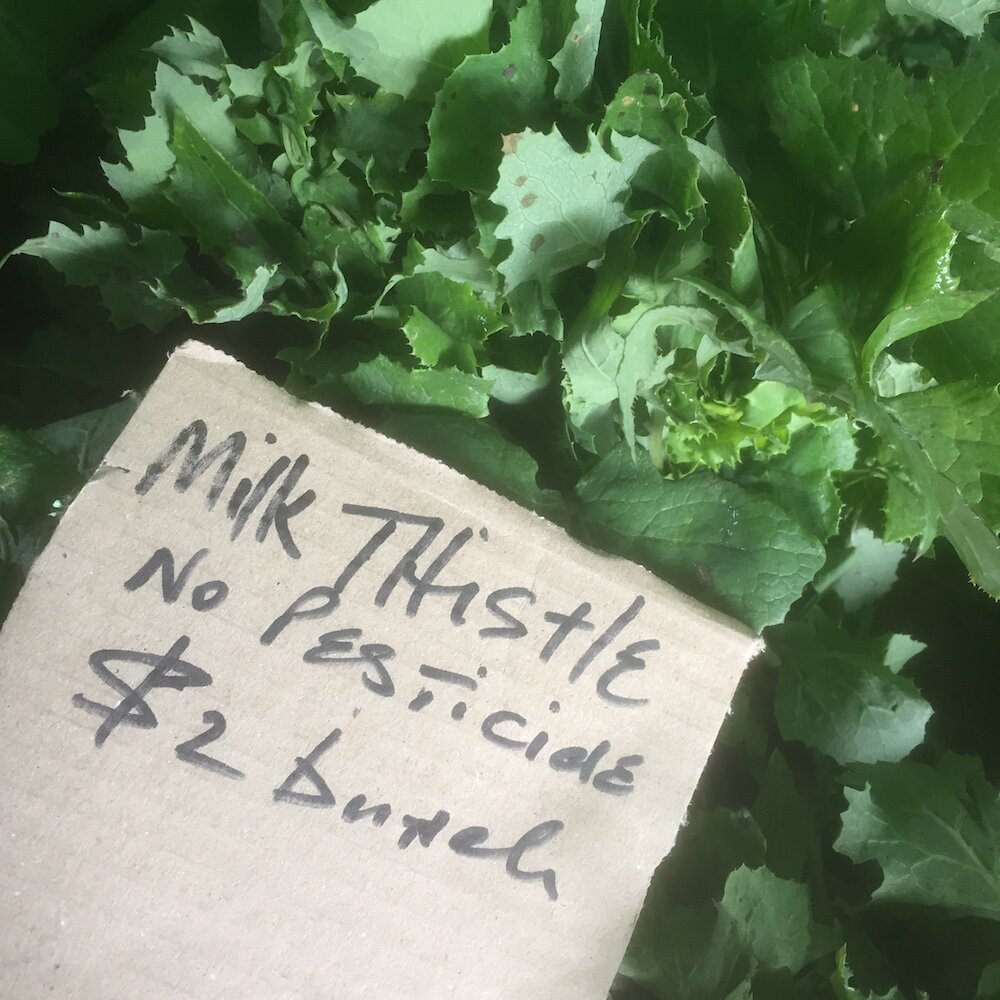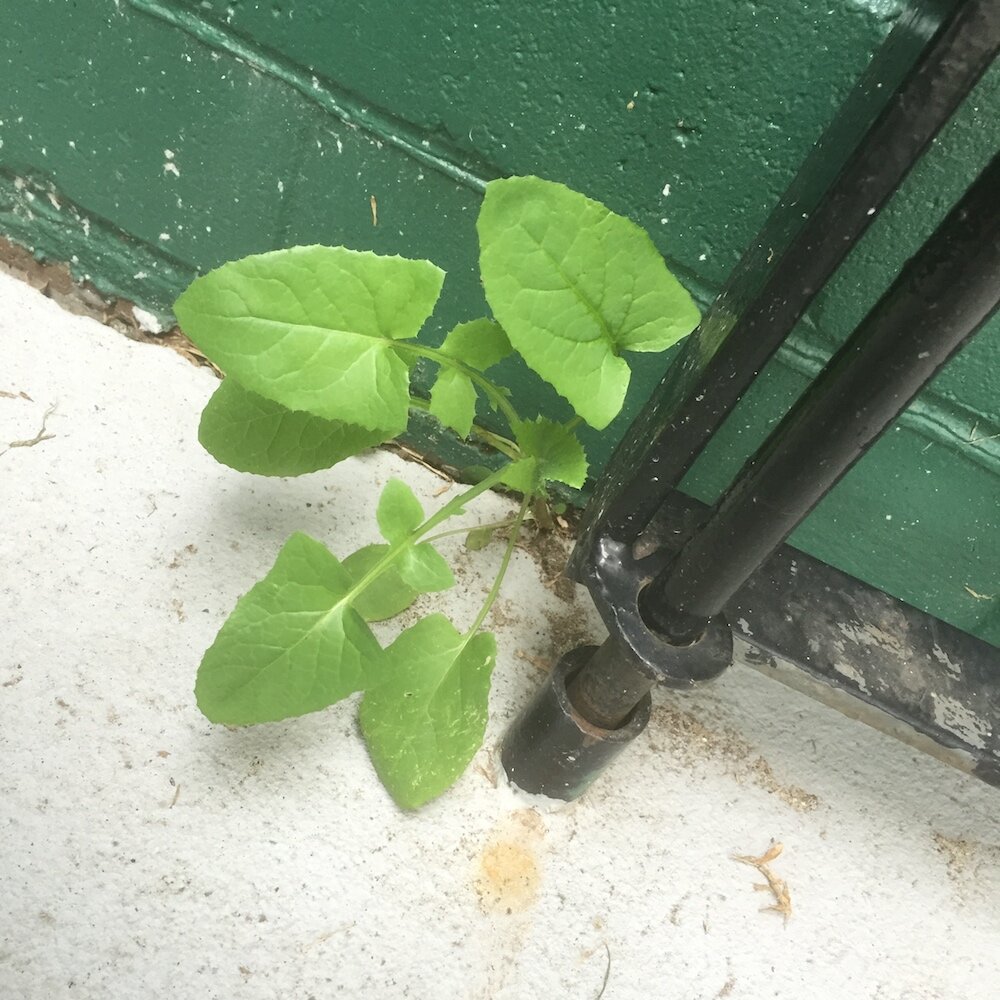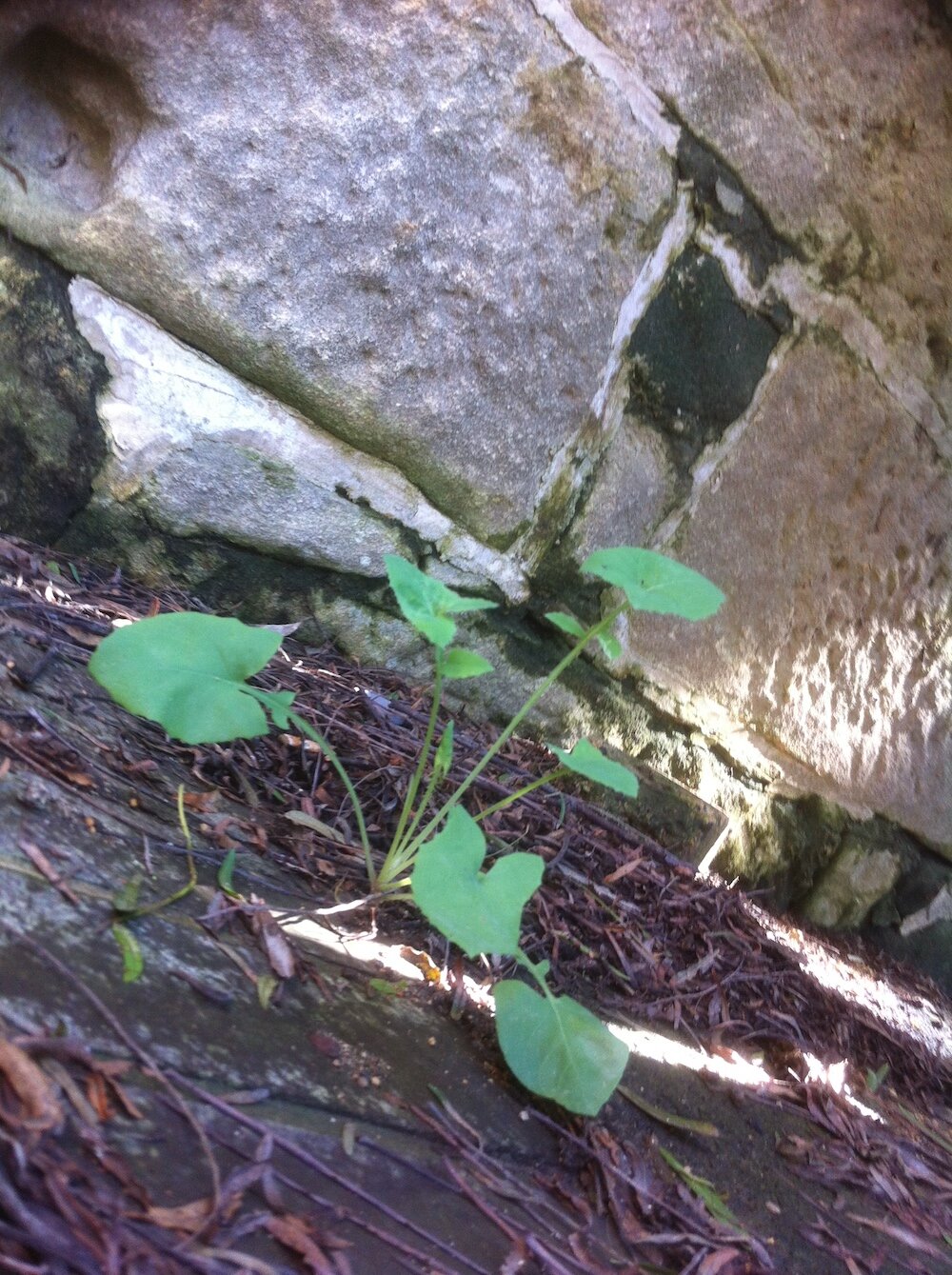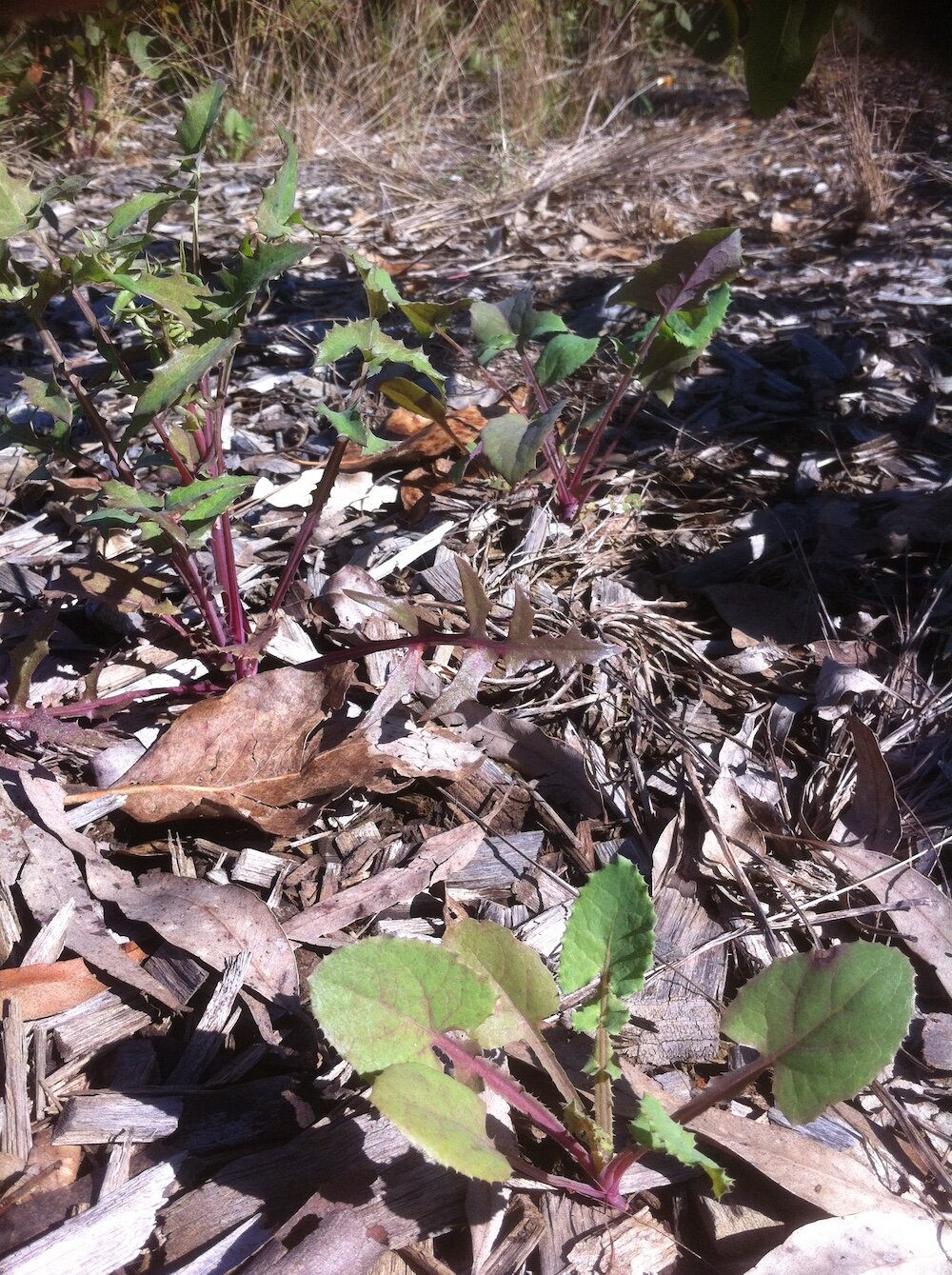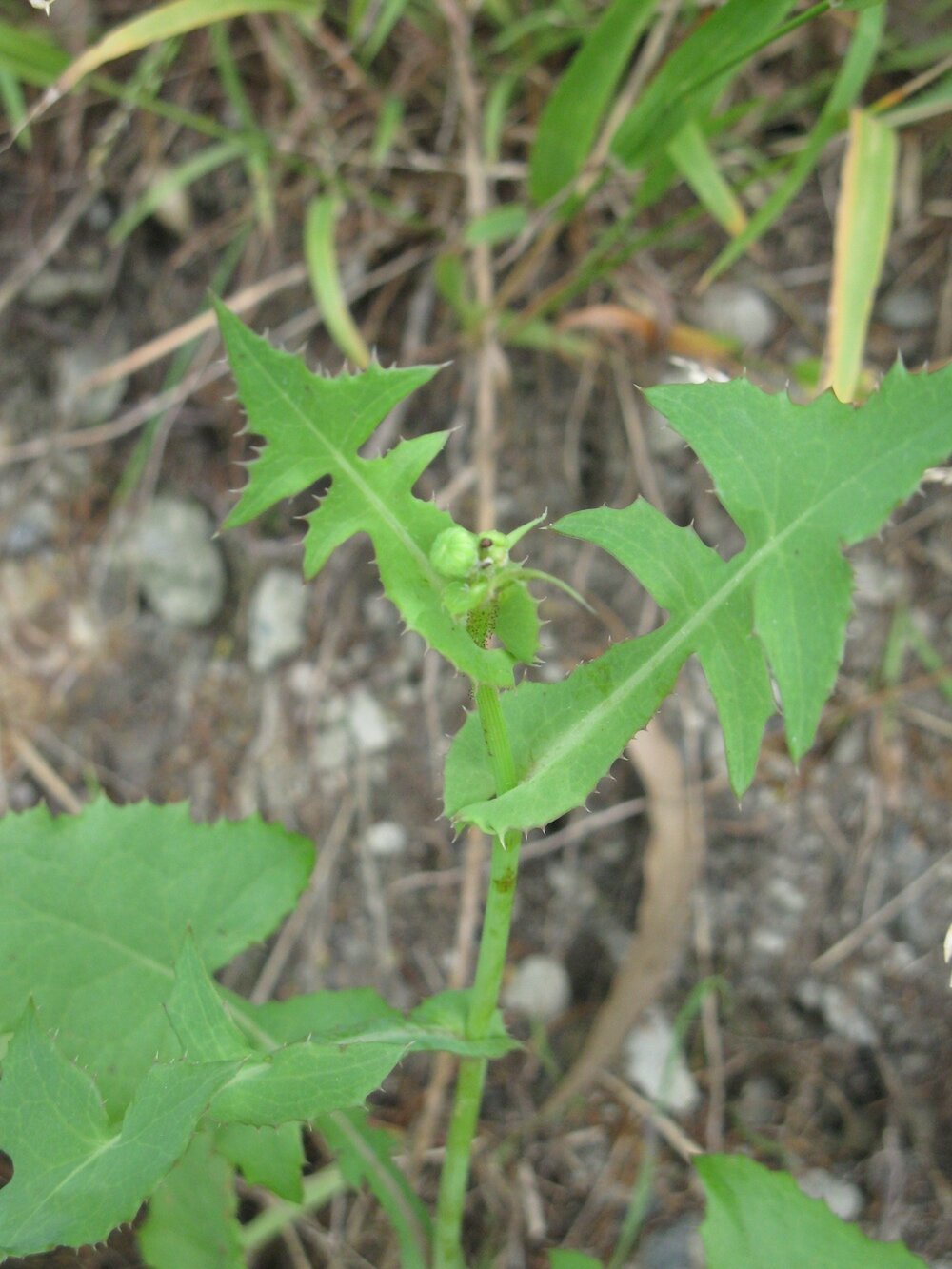How to identify and use sow thistle, the perfect edible weed.
The typical multi-headed flower of sowthistle.
Sowthistle (aka milkthistle or sow thistle) is everywhere, all over the world and across several living conditions, from tropical to arid, from farm crops to backyard gardens. All over the world. This plant produces thousands of seeds (as much as 25,000 per plant) and each one of them has a 90% chance of germination. Yes, we are talking about a highly skilled invasive, but that is not necessarily bad, as sowthistle is food for a lot of ethnicities.
I am always impressed by just how many advocates this plant has. Whenever I introduce this plant to the public I often find that someone in the crowd is quite familiar with it and its traditional edible uses. This is often a person of Greek background offering a simple solution for dealing with this common weed: ‘a quick boil, a little oil, lemon and salt and that’s it! Enjoy!’
Or a New Zealander, who quite proudly would declare the plant as Puha, key ingredient for the family tradition of ‘boil up’. See here for the ‘quintessentially Maori’ recipe>>
Sowthistle -despite its unpredictable behaviour and variability in leaf shape, is easy to identify. The plant is everywhere and no doubt you walk past it every day. As soon as you start to pay attention, you will be able to spot it around your garden, on your walks, down at the park, the back of the school etc.
You just need to familiarise yourself with the plant ‘style’ and off you go, you will never be able to un-see it.
IDENTIFICATION
Sowthistle is excellent at adapting. It ranges from 30cm to 2 meters in height when growing in good soil. It really grows to suit conditions.
According to this CSRIO research (on how to best kill the plant), there are three species of sowthistle in Australia, one native – Sonchus hydrophilus - and two introduced, Sonchus asper and Sonchus oleraceus.
All edibles and quite yummy, some say.
The best identification feature for all sowthistles is in the flower. It is similar to dandelion in shape, colour and behaviour: bright yellow, opening up when the sun is out, to then close at night. And just like the dandelion, it too has a puffy seed head, with the seed ‘parachutes’ blowing in the wind when ready. The difference is the number of flowers per head.
Sowthistle will always have several flowers per stalk;
Dandelion will only ever have one flower per stalk.
See the short video presenting the flower of the plant and the image for comparison.
All sowthistles have milk, visible when you break the plant. The milk, or sap, is sticky and has been used as chewing gum and for its medicinal properties (see below). Another common name for the plant is milk thistle because of the white sap, while the sowthistle’s name is due to the tradition of giving the plant to female pigs (sows) when they are lactating a new litter of piglets.
Flower head comparison between sowthistle and dandelion.
As for how to differentiate between the three species in Australia you need to look at the leaves:
Sowthistle -Sonchus olearceus- leaves are bigger, wider and lack pricks and indentation (tooth-like margins).
Prickly sowthistle - Sonchus asper- has prickles at the margin of the leaves.
Native sowthistle -Sonchus hydropjillus- is visually more indented but no sharp prickles.
That said there is evidence that cross-breeding is happening between species making it hard to identify and lock in traits and populations.
In term of availability, sowthistles are in season all year round on this side of the world. At any given time you are bound to find a sprouting, flowering, seeding or dying example of the genus. Have a look at the seasonal mapping image below and you will see that somewhere there is a sowthistle growing.
The plant tastes best when young, the leaves are soft and reminiscent of lettuce or radicchio. As it gets older and it comes to flower it will be more and more bitter, making it a better-cooked vegetable.
SOWTHISTLE AS FOOD
Sowthistle has been a much-loved bush tucker plant by various Aboriginal mobs throughout Australia, including Victoria where the Yorta Yorta mob knows it as buckabun or in New South Wales where the Yuwaalayaay language group knows it as dhiinyaan.
The best part of the plant is the young leaves, raw or cooked. They can be added to salads, cooked like spinach or used in soups etc. You can also use the stems, cooked like asparagus or rhubarb. The milky sap has been used as a chewing gum by the Maoris of New Zealand.
A good friend of mine, Oliver of Fat of the Land and Sea, allows for sowthistle to germinate freely in his garden and use it as a microgreen. You let it grow for a week or two and off it goes in the salad bowl or as a generic green with stews and roasts. I think this is brilliant. Oliver takes advantage of the high germination rate and exploits the weedy potential of the plant.
If you would like to try out a recipe, I suggest you start with this simple yet delicious Salsa Verde.
See here, scroll down and enjoy!
MEDICINAL PROPERTIES
The plant is quite high in vitamins and minerals, making it a great tonic. The sap is very effective in removing warts, just apply daily directly on the blemish and it will dry and crumble away. I remember teaching this to a friend of mine and each time we went out to walk her dog we would find some sowthistle and apply to the wart. It took less than two weeks for it to disappear.
SOWTHISTLE IN THE GARDEN
Most people tend to pull sowthistle out from their garden, considering them as unwanted weeds. Others consider them as an excellent and prolific green and others still use them as a valuable plant in their garden. Sowthistle attracts aphids and that is a good thing for organic gardeners as they can have a sacrificial plant hosting pests, which in turn will attract beneficial predatory insects in the garden ecosystem ( like ladybirds and hoverflies). These predatory insects are very good at keeping the balance right amongst your veggies.
Turns out sowthistle are your friends after all.
Yay for weeds.
Acoli (Uganda): Lapuku
Albanian (Albania): Rrëshyell perime
Arabic (Lebanon): بَقْلَة يَهودِيَّة
Bulgarian (Bulgaria): Градински кострец
Chinese (China): 苦苣菜 ku ju ca
Italian (Italy): Crespigno
Korean (Korea): bang-ga-ji-tong
Turkish (Turkey): Kuzugevreği
Vietnamese (Vietnam): Diếp dạ
REFERENCE:
The Wondrous World of Weeds by Pat Collins
Weeds: Guardians of the soil by Joseph Cocannouer
DISCLAIMER: This information should be used as a guide only. It is not my intention to advise anyone on medical conditions, rather I'm just presenting a new way to look at the plants growing in your yard.
Let me help: if you are unsure about the identity of your plants tag me in a picture or comment below, and I’ll endeavour to help.
Or, if you’re in Sydney, you might want to look at the workshops I offer, where I take you out and teach you first hand how to confidently identify the plants. We might even taste a few. See here for upcoming events>
Buy EAT WEEDS- A filed guide to foraging; Get a personalised copy here>


